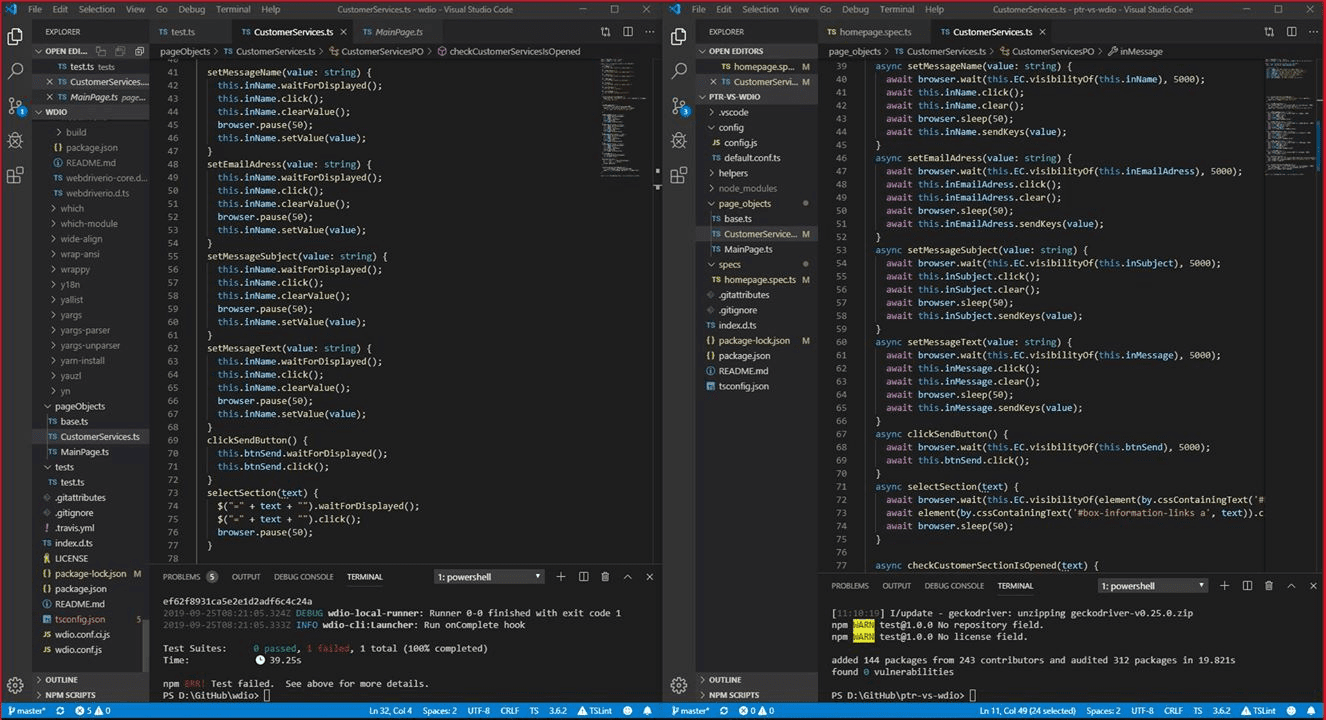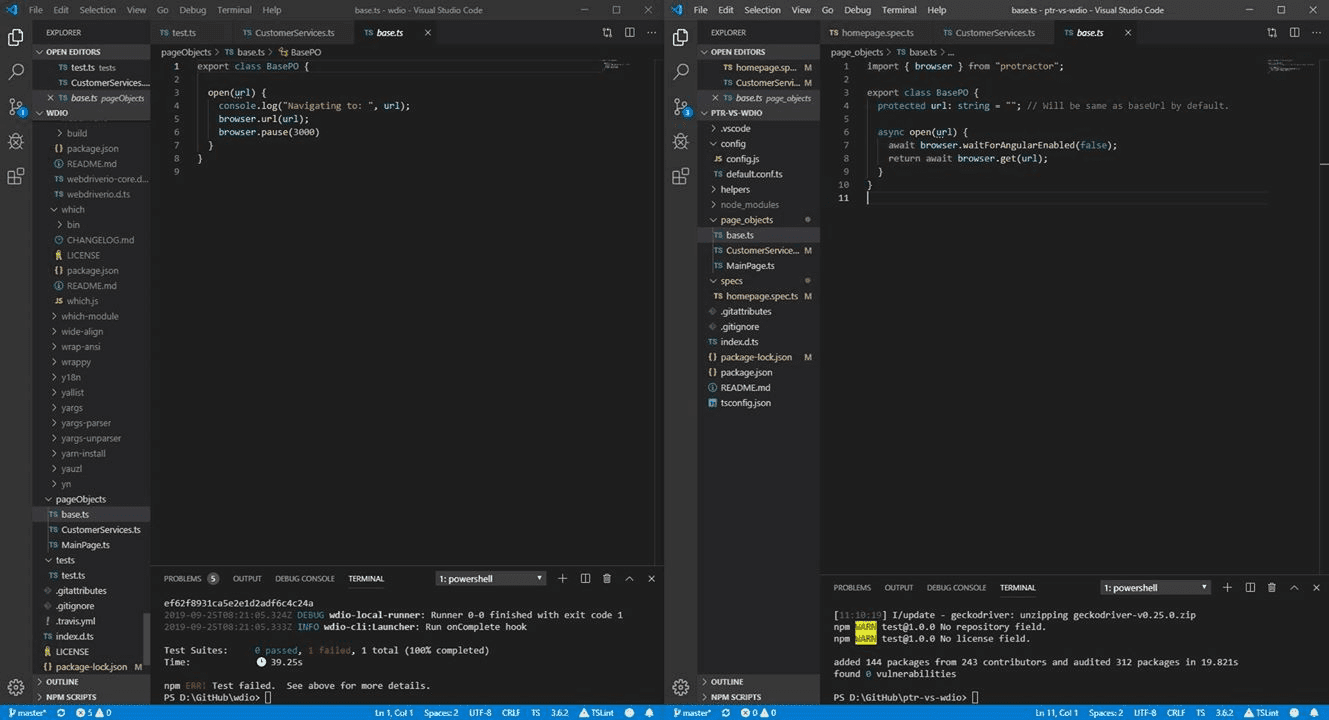
USA
Thank you for reaching out to Sigma Software!
Please fill the form below. Our team will contact you shortly.
Sigma Software has offices in multiple locations in Europe, Northern America, Asia, and Latin America.

USA

Sweden

Germany

Canada

Israel

Singapore

UAE

Australia

Austria

Ukraine

Poland

Argentina

Brazil

Bulgaria

Colombia

Czech Republic

Hungary

Mexico

Portugal

Romania

Uzbekistan
Hi everybody! I would like to share my brief comparison of popular frameworks for automation of web testing – Protractor and WebdriverIO JavaScript. This comparison may help you make up your mind when choosing a solution.
As an example, I am using the same framework models and identical tests for the same web resource, with same checks but written using different frameworks. Initially, the tests were written for WebdriverIO and then ported to Protractor. The porting took about an hour for this specific instance.
1. In WDIO, code synchronization is performed by an internal engine. However, if you wish, it allows you to use async / await syntax. In Protractor code, you need to use async / await to synchronize the code.

2. In WDIO, you have fewer waiters, and they look clearer. In Protractor, there are more default waiter types, and they are more flexible in customization but more complex in reading. Both frameworks allow writing your own waiters, in WDIO – waitUntil(), and in protractor – with browser.wait().

You can see an example of waiters at the bottom of the screenshot.
3. In WDIO, you have to use getters when declaring the element. Otherwise, if the search for the element takes place before the element appears on the page, it will cause an error. Protractor uses the so-called Lazy elements, and the search for elements occurs automatically when calling a function where they are used.

4. WebdriverIO is more aimed at testing React applications, while Protractor is designed for testing Angular projects, so it has a built-in mechanism of waiting for a page to load in Angular. Writing tests for something OTHER than Angular is possible, but requires to use .waitForAngularEnabled(false) at every page opening in order to disable the mechanism of waiting for the answer from Angular on the page. If it is not used, the framework will wait for the page to load until the end of timeout, and then the tests fail.

Protractor:
To conclude: a good framework for writing tests for Angular applications. It can be used for writing tests for non-Angular applications, but you have to disable waiting for Angular on the page. It is the most popular at the moment, but the updates are not regular. If you need automation for Angular, this framework is your choice.
WebdriverIO:
To conclude: a good framework for writing tests for React and any other type of applications, including mobile (via Appium). The readability is a little better thanks to no need of using async/await and laconic waiters. If you need automation for React and more, and you are interested in regular updates and support, this framework is your choice.

Pavlo is an Test Automation Engineer with big experience in manual testing in the past. His interests include JavaScript- and JavaScript-based automation test frameworks.


On November 27, in Lviv, Forbes AI Summit brought together entrepreneurs, technology leaders, and scientists for an honest conversation about how AI is reshapin...

The EU Data Act went live in September 2025. Its rollout across Europe has been uneven, with only a few member states having completed the national set-ups. Nev...

For years, manufacturers have been talking about the advantages of shifting to outcome-based business models. The rise of AI has made the opportunity for transf...
Would you like to view the site in German?
Switch to German